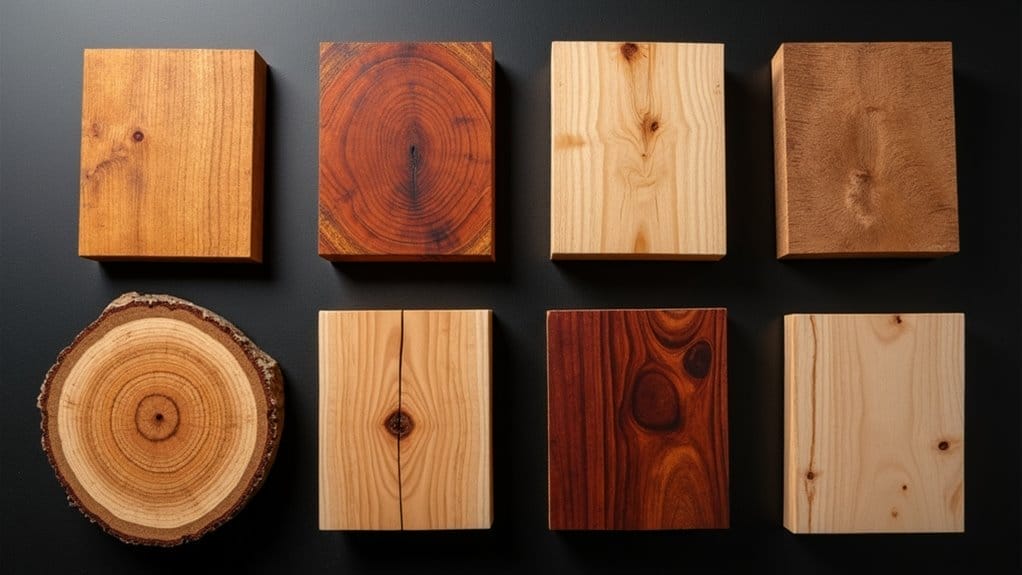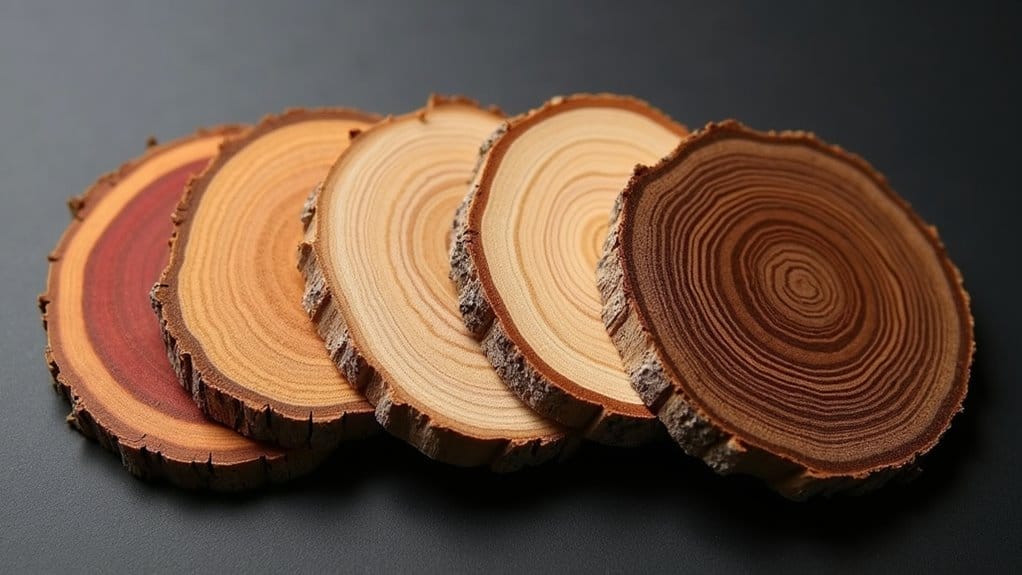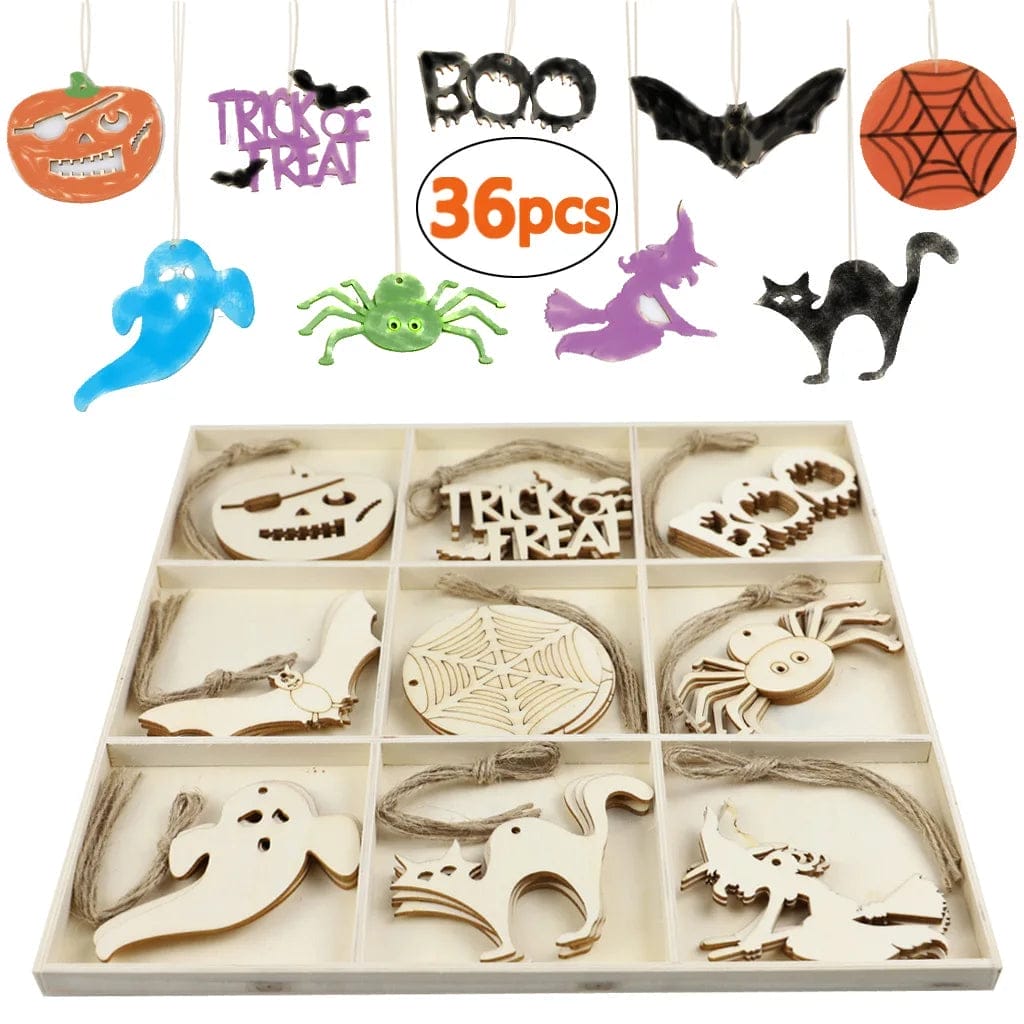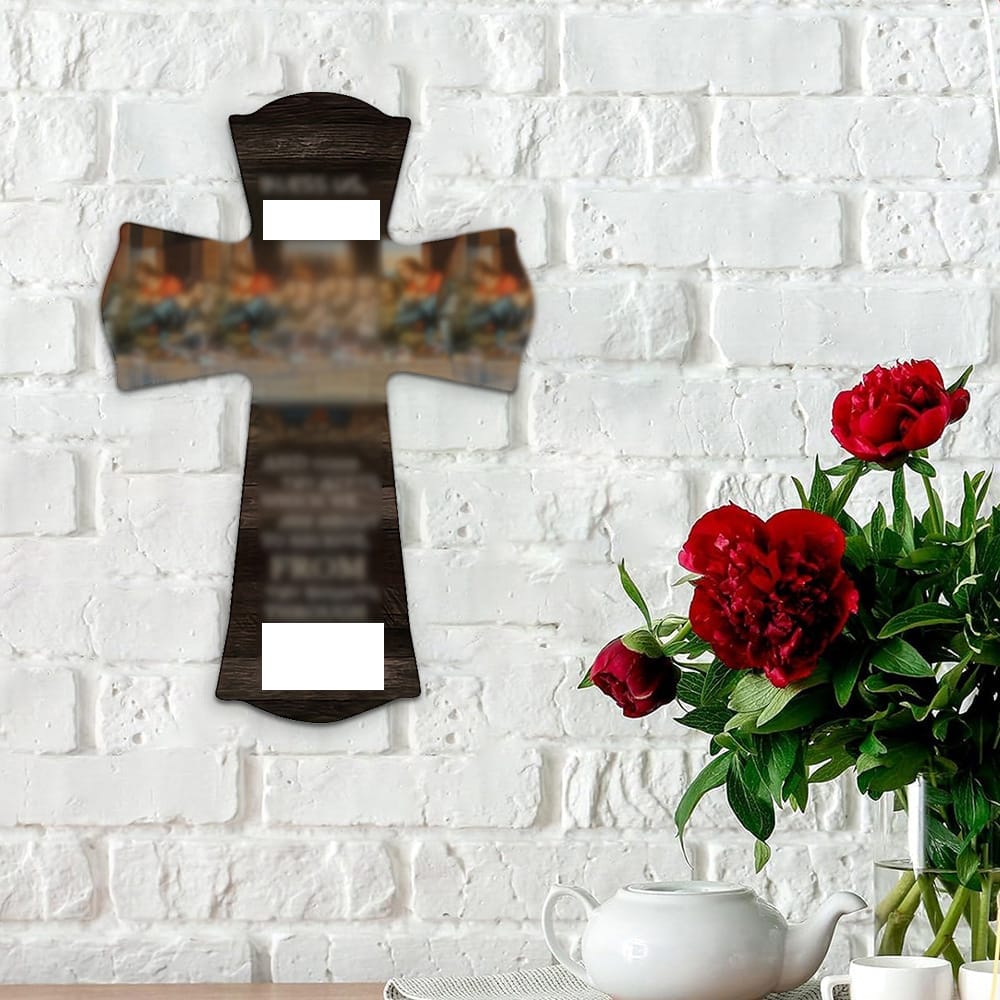When you’re planning your next woodworking project, you’ll quickly discover that choosing the right wood type can make or break your results. Each wood species offers distinct characteristics that affect durability, workability, and aesthetic appeal. From the rich grain patterns of oak to the weather resistance of cedar, your selection will impact both the construction process and the final product’s longevity. Let’s explore how to match specific woods with their ideal applications.
Key Takeaways
- Hardwoods like maple and oak excel for furniture and flooring due to durability, while softwoods like pine suit construction projects.
- Cedar and pressure-treated pine are optimal for outdoor projects due to natural weather resistance and decay-fighting properties.
- Walnut and mahogany are premium choices for fine furniture and cabinetry, offering rich aesthetics and excellent finishing qualities.
- Availability and cost influence selection, with common woods like pine being affordable and exotic hardwoods commanding premium prices.
- Project-specific requirements determine wood choice: decking needs weather resistance, furniture demands strength, and decorative pieces require workability.
Overview of Hardwood and Softwood

Trees provide two distinct categories of wood: hardwoods and softwoods. Hardwoods come from deciduous trees that shed leaves annually, while softwoods originate from evergreen trees that maintain year-round foliage.
Despite their names, the hardness of wood doesn’t strictly correlate with these categories, as some softwoods can be harder than certain hardwoods.
When selecting between hardwood and softwood, you’ll need to evaluate multiple factors: grain pattern, density, durability, and workability. Each type offers unique characteristics that affect their applications.
Hardwoods typically display more complex grain patterns and greater hardness, making them ideal for furniture and flooring, while softwoods excel in construction and outdoor projects.
Common Types of Wood

When you’re evaluating common wood types, you’ll encounter premium hardwoods like maple, known for its tight grain pattern, and walnut, prized for its rich brown coloring.
Mahogany and teak stand out as exceptional choices for furniture and cabinetry due to their superior stability and natural resistance to decay.
Hickory offers remarkable strength and shock resistance, making it particularly suitable for tool handles and flooring applications where durability is essential.
Maple
Maple stands among woodworking’s most versatile and sought-after hardwoods, offering excellent durability and a distinctive grain pattern.
You’ll find it’s characterized by its straight grain and light color, ranging from creamy white to pale reddish-brown. The wood is denser than many alternatives, making it highly resistant to dent and wear.
You’ll appreciate maple’s exceptional stability in furniture making, particularly for high-traffic pieces like tables, chairs, and cabinetry.
It’s also popular for flooring and musical instruments.
When working with maple, you’ll notice it responds well to both hand and machine tools, though its density requires sharp blades for clean cuts.
Walnut
Distinct from maple’s light tones, walnut commands attention with its rich chocolate-brown heartwood and straight-to-wavy grain patterns.
This premium hardwood species evolves from reddish-brown to deep purple hues as it ages, making it highly sought after for high-end furniture and architectural details.
You’ll find walnut’s exceptional workability ideal for both hand and machine tools, though it’s among the more expensive wood options available.
Its natural resistance to decay and dimensional stability make it perfect for heirloom pieces.
When selecting walnut, you’ll want to account for its moderate density and excellent finishing properties that showcase its sophisticated character.
Mahogany
Mahogany’s legendary status among fine furniture makers stems from its exceptional stability and striking reddish-brown color palette. You’ll find this premium hardwood primarily in high-end furniture and cabinetry, where its straight, tight grain pattern offers both aesthetic appeal and structural integrity.
When you’re working with mahogany, you’ll notice it’s remarkably durable and resistant to rot, making it ideal for pieces that need to last generations. Its beauty and durability make it a top choice for architectural millwork and musical instruments.
While expensive, mahogany’s dimensional stability and ease of finishing justify its cost in projects demanding excellence.
Hickory
While mahogany offers elegance, hickory stands as North America’s champion of strength and impact resistance. This hardwood type leads all commercial wood species in shock resistance and density, making it ideal for high-wear applications.
You’ll find hickory excels in furniture construction, particularly for chairs, tables, and cabinetry where durability is paramount.
For your woodworking project, expect this dense material to resist dents and scratches better than most alternatives.
Though challenging to work with due to its hardness, hickory’s distinctive grain patterns and color variations from light cream to reddish-brown make it worth the extra effort, especially in pieces that’ll endure daily use.
Teak
Prized for its exceptional weather resistance, teak has earned its reputation as the gold standard for outdoor and marine applications.
You’ll find this naturally resistant hardwood maintaining its integrity even after decades of exposure to harsh elements.
When selecting teak for outdoor furniture, you’ll notice its high oil content makes it resistant to decay, insects, and fungal growth.
The wood’s tight grain and natural compounds help it withstand wear and tear without warping or cracking.
While it’ll develop a silvery-gray patina over time with outdoor use, you can maintain its golden-brown color through regular oil treatments.
Pine
As one of the most versatile softwoods available, pine offers an excellent balance of affordability and workability for both construction and furniture making.
You’ll find this lightweight softwood ideal for framing, trim work, and rustic furniture projects.
Trees such as pine grow rapidly, making them sustainable and cost-effective.
While pine’s characteristic knots can affect structural integrity, they add distinctive character to decorative pieces.
The wood is easy to work with hand and power tools, accepting nails, screws, and glue readily.
When selecting dimensional pine lumber, you’ll notice it’s available in standardized sizes and grades, making it perfect for predictable construction applications.
Cedar
Known for exceptional weather resistance, cedar ranks among the most naturally durable woods you’ll encounter in both exterior and interior applications.
You’ll find it’s naturally resistant to decay, insects, and moisture, making it ideal for outdoor projects like decks, fences, and siding.
Cedar’s straight grain and lightweight nature make it easy to work with, while its distinctive aroma adds a pleasant characteristic to closets and chests.
When you’re selecting cedar for a fence or deck, you’ll notice it doesn’t readily absorb moisture, which contributes to its impressive resistance to decay.
Its reddish-brown to pale yellow colors will naturally weather to an attractive silver-gray over time.
Factors to Consider When Choosing Wood

When selecting wood for your project, you’ll need to carefully evaluate four critical factors that will impact your final product’s success.
You must first determine the wood’s intended purpose and required strength characteristics, while considering its visual properties and how they’ll complement your design.
The wood’s cost and local availability will ultimately influence your decision, as even the perfect species won’t serve you well if it exceeds your budget or causes project delays due to sourcing difficulties.
Purpose of the Product
The intended purpose of your woodworking project directly determines which wood species you’ll need to select.
During the selection process, consider how your finished wood products will be used and where they’ll be placed.
- Indoor furniture requires stable woods that won’t warp with temperature changes, like maple or oak.
- Outdoor projects demand weather-resistant species such as cedar or teak.
- Structural elements need dense, load-bearing woods like hickory or white oak.
- Decorative pieces allow for softer, more aesthetically pleasing woods like cherry or walnut.
The style of your project and its purpose will narrow down your choices to woods that meet specific performance requirements.
Durability and Strength
Durability and strength characteristics form the backbone of proper wood selection for any project.
You’ll need to evaluate both mechanical strength for structural integrity and resistance to environmental factors. Consider pressure-treated lumber for exterior applications where decay and insects pose significant threats.
Some species, like cedar and redwood, are naturally resistant to rot, making them excellent choices for outdoor projects without chemical treatment.
For interior structural elements, focus on strength ratings and load-bearing capacity. You’ll find that dense hardwoods offer superior durability for high-wear applications, while specific softwoods provide adequate strength for general construction at a lower cost.
Aesthetic Appeal
Beyond structural considerations, visual characteristics play a major role in wood selection. Different wood species offer unique aesthetic appeal through their distinct grain patterns, colors, and textures.
- Natural coloration ranges from light maple to deep walnut, letting you match your design vision without relying on stain.
- Grain patterns vary dramatically – cherry wood displays flowing patterns while maple offers subtle, uniform appearance.
- Surface texture differences affect both visual and tactile qualities, from smooth to pronounced wood grain.
- Aging characteristics determine how your wood will develop patina over time – cherry darkens while maple maintains consistency.
Consider these visual elements alongside functional requirements for ideal wood selection.
Cost and Availability
When selecting wood for your project, cost and availability factors greatly impact the final choice. Common wood options like pine and oak are readily available at most lumber yards, while exotic hardwoods may require special orders and higher costs.
Hardwoods are typically more expensive than softwoods due to slower growth rates and limited supply. You’ll find price variations based on grade, dimension, and regional availability.
Consider exploring recycled wood or reclaimed lumber to reduce costs while maintaining quality. Local sawmills often offer better prices than retail outlets.
Different types of wood fluctuate in market price, so timing your purchase strategically can yield significant savings.
Wood Selection Guide for Specific Products

When selecting wood for specific products, you’ll need to match the material’s properties to each project’s unique requirements and environmental conditions.
For decks and fences, you’ll want weather-resistant species like cedar, redwood, or pressure-treated pine that can withstand outdoor exposure and ground contact.
For indoor woodworking projects, consider hardwoods like oak, maple, or walnut that offer superior stability, durability, and aesthetic appeal.
Choosing Wood for Decks
Since outdoor decking endures constant exposure to weather and foot traffic, selecting the right wood species becomes essential for long-term durability and performance.
When choosing the right wood types for outdoor projects like decking, focus on naturally resistant species.
- Pressure-treated pine offers affordability and decay resistance through chemical treatment, making it a practical choice for outdoor use.
- Western red cedar provides natural resistance to rot and insects, with excellent dimensional stability.
- Redwood delivers superior decay protection and aesthetic appeal, though at a premium price.
- Ipe demonstrates exceptional durability with a dense grain structure that resists weathering.
Selecting Wood for Fences
Wooden fences require strategic material selection to withstand outdoor exposure, soil contact, and varying moisture conditions.
Cedar and redwood remain a premier choice for outdoor projects due to their natural resistance to decay and insects. If you’re considering pressure-treated lumber, pine and fir offer excellent durability, especially when treated, at a lower cost point.
For posts that contact soil directly, opt for ground-contact rated pressure-treated wood.
The right type of wood for fence boards should offer good dimensional stability to prevent warping. Cypress provides natural weather resistance, while treated southern yellow pine delivers reliable performance in various climate conditions.
Wood Selection for Woodworking Projects
Different woodworking projects demand specific types of wood based on their unique requirements and end-use conditions. When selecting from many different types of wood, you’ll need to take into account the categories of wood and their characteristics for your specific project.
- For furniture making, choose hardwoods like oak or maple that offer superior strength and readily accepts stains.
- Select pine or cedar for decorative items, given their ease of workability and attractive grain patterns.
- Use birch or poplar for cabinet making, as they’re stable and take paint well.
- Reflect on walnut or cherry for fine woodworking, offering premium appearance and excellent durability.
Frequently Asked Questions
How Long Should Wood Acclimate Before Use in Indoor Projects?
You’ll need to let your wood acclimate for 1-2 weeks indoors before starting your project. Keep it stacked with spacers in the same room where it’ll be used, maintaining consistent temperature and humidity.
Can Wood From Different Species Be Mixed in a Single Project?
You can mix different wood species in your projects, but you’ll need to account for varying expansion rates, grain patterns, and moisture content. Always choose woods with similar density and dimensional stability.
What Is the Best Method for Testing Wood Moisture Content?
You’ll get the most accurate moisture readings using a quality pin-type moisture meter. Insert the pins along the grain at multiple points, and you’ll want to test both the surface and core areas for reliable results.
How Does Wood Color Change Over Time With Sun Exposure?
You’ll notice wood typically darkens or fades when exposed to UV rays. Light woods often yellow or darken, while darker woods can bleach lighter. This photochemical reaction occurs in your wood’s lignin and extractives.
Are There Eco-Friendly Alternatives to Endangered Exotic Wood Species?
You’ll find sustainable alternatives like bamboo, reclaimed wood, and FSC-certified species. You can also use plantation-grown woods like teak or eucalyptus, or opt for domestic hardwoods that mimic exotic grain patterns.
Conclusion
Your wood selection directly impacts your project’s success and longevity. You’ll need to evaluate specific mechanical properties, including tensile strength, grain pattern, and moisture resistance. For outdoor applications, select weather-resistant options like cedar or pressure-treated lumber. Indoor projects benefit from hardwoods’ superior stability and aesthetic qualities. Match your wood’s characteristics to your product’s requirements, considering both technical specifications and environmental exposure conditions.






































